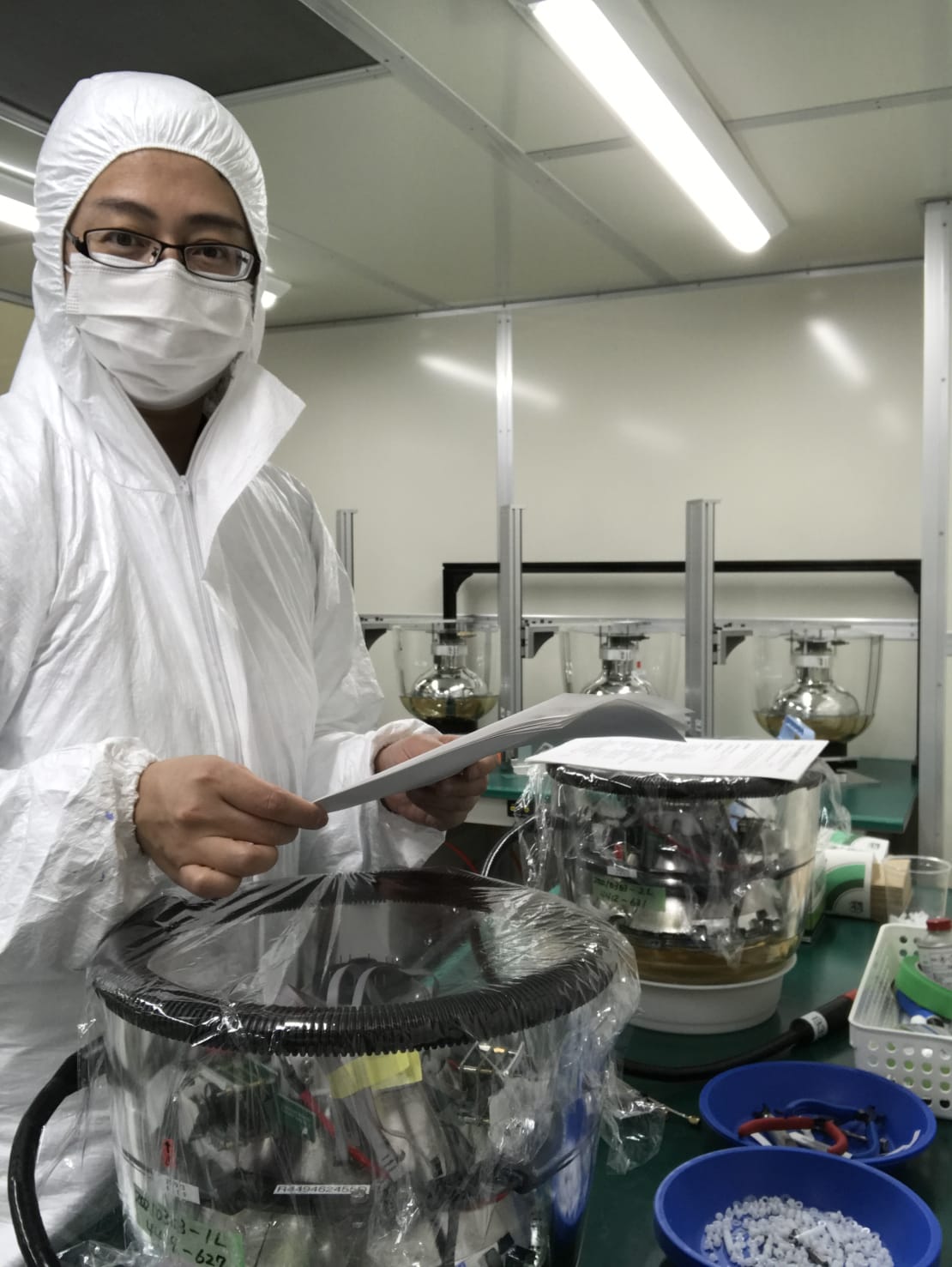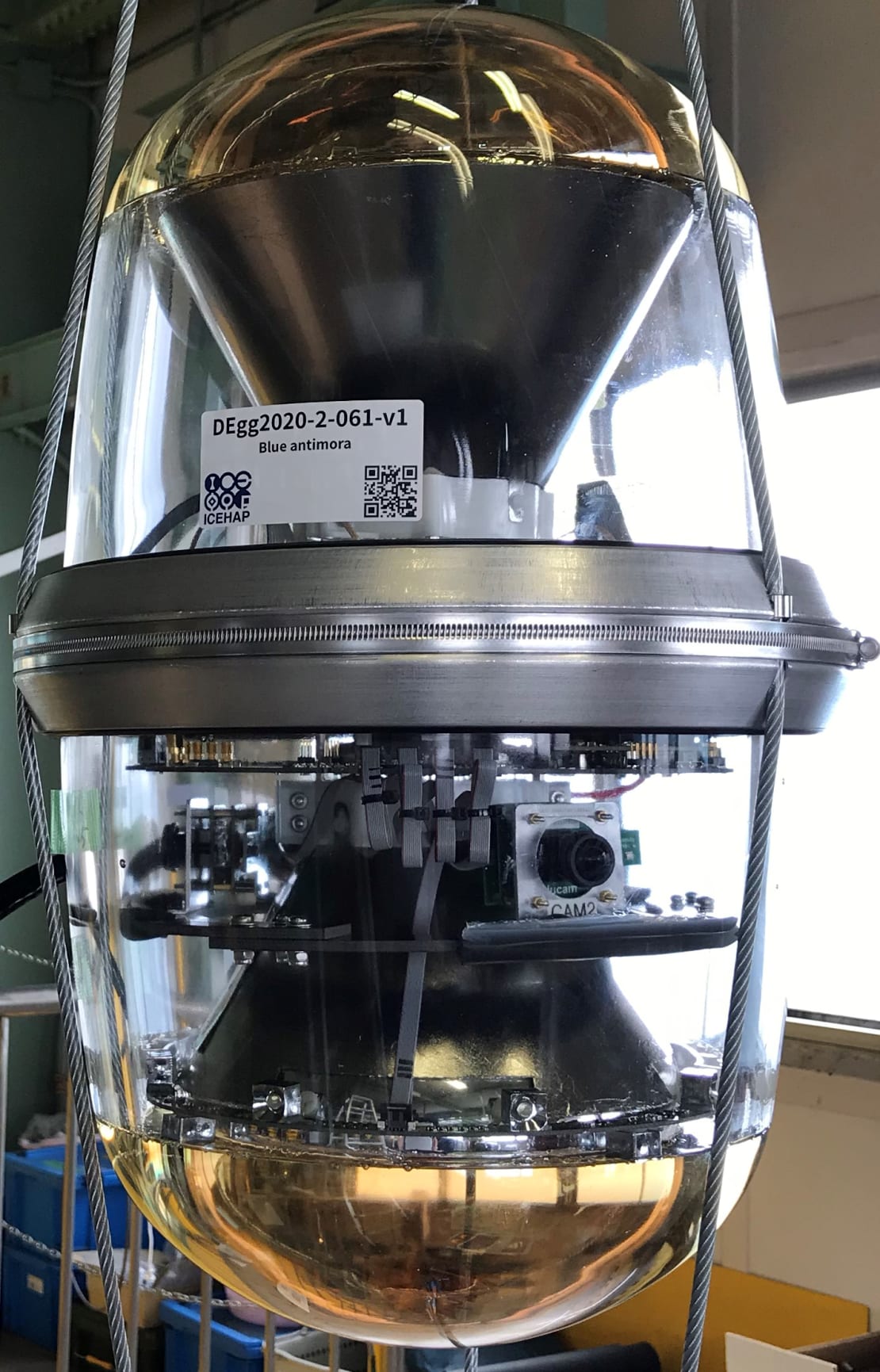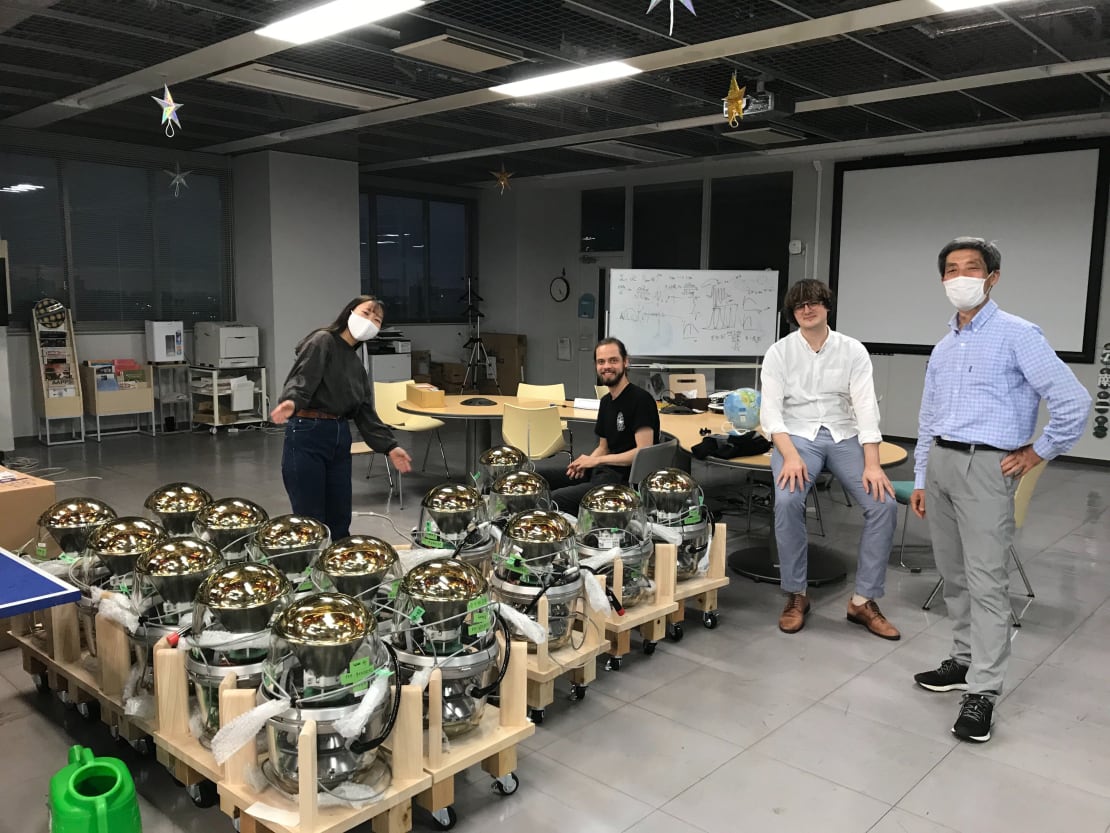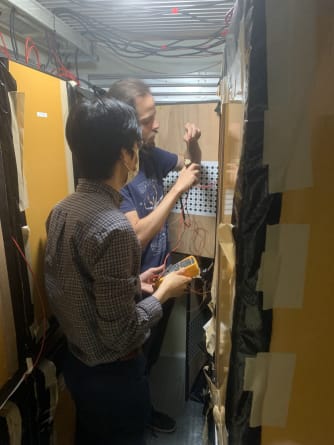The IceCube Neutrino Observatory, a cubic-kilometer-sized neutrino telescope, searches for high-energy neutrinos of astrophysical origin. Located at the geographic South Pole, IceCube consists of 5,160 digital optical modules (DOMs) across 86 vertical cables (strings) embedded deep within the Antarctic ice, as well as a surface array, IceTop, and a denser inner subdetector, DeepCore. When neutrinos interact with molecules in the ice, charged particles are produced that then emit blue light while traveling through the ice, which is then registered and digitized by the individual DOMs.
In 2019, the National Science Foundation approved the IceCube Upgrade, which will deploy seven new strings of optical modules in the center of the existing detector array, significantly increasing IceCube’s sensitivity at low energies. Almost half of the new optical modules that will be deployed in the upcoming IceCube Upgrade expansion are based on the Dual optical sensors in an Ellipsoid Glass for Gen2 (D-Egg) design.
In a paper recently submitted to JINST, the IceCube Collaboration presents the design and performance of the D-Egg. The D-Egg satisfied the technical performance requirements for the IceCube Upgrade and showed improved sensitivity compared to the previous generation DOMs.

Researchers at Chiba University in Japan spearheaded the development and production of the D-Egg, which started in March 2019. A total of 310 D-Eggs have been mass-produced, with 277 of those to be deployed within the IceCube Upgrade during the Austral Summer of 2025-26.


The appropriately named D-Egg has an elongated, egg-like shape that, although smaller in diameter than the current IceCube DOM, triples the photon detection effective area. This is possible because the D-Eggs use two photomultiplier tubes (PMTs), compared to a single PMT for the IceCube DOM. These PMTs are also of higher quantum efficiency, which means more photons are detected. Furthermore, they are housed in extremely transparent glass vessels. The resulting smaller diameter therefore allows smaller boreholes to be drilled, thus potentially reducing construction and operation costs.

To test D-Egg performance, each D-Egg was measured for its sensitivity in the laboratory using a built-in data acquisition system that simulated in-ice sensitivity. The D-Eggs were tested at low temperatures, as well as fluctuating temperature cycles to mimic the drastic temperature transitions that can occur at the South Pole. They were also tested for low-energy and high-energy physics capabilities. Not only were the D-Eggs operationally stable but they also met the requirements for low-energy analyses.

“With much advice from the experts who remembered the IceCube’s sensor production more than 10 years ago, we were able to mass-produce D-Eggs on schedule without any significant problems,” said Aya Ishihara, a professor of physics at Chiba University. “The photon detection sensitivity of the produced D-Eggs has significantly improved compared to the current IceCube optical modules, whose features we relied on heavily for designing the D-Egg.”
The results of the measurements look promising for its performance in future extensions of IceCube, with deployment of the D-Eggs for the IceCube Upgrade slated to begin during the 2025-2026 Antarctic summer season. As the first nonspherical optical module, the D-Egg will set a precedent for years to come.
+ info “D-Egg: a Dual PMT Optical Module for IceCube,” IceCube Collaboration: R. Abbasi et al., Submitted to JINST, arxiv.org/abs/2212.14526



